-
Car Reviews
- Car News
-
Car Comparisons
Latest comparisons
- Chasing Deals
Hyundai’s Kona grows a half-size bigger to better take on the Toyota Corolla Cross – and we’ve driven it in turbocharged, AWD form first
Small SUVs are increasingly taking on the role traditionally played by hatchbacks on the Australian markets – for some, it’s a sole vehicle that needs to regularly carry a brood and their cargo.
For others, it’s a second car – a runabout parked alongside a larger crossover.
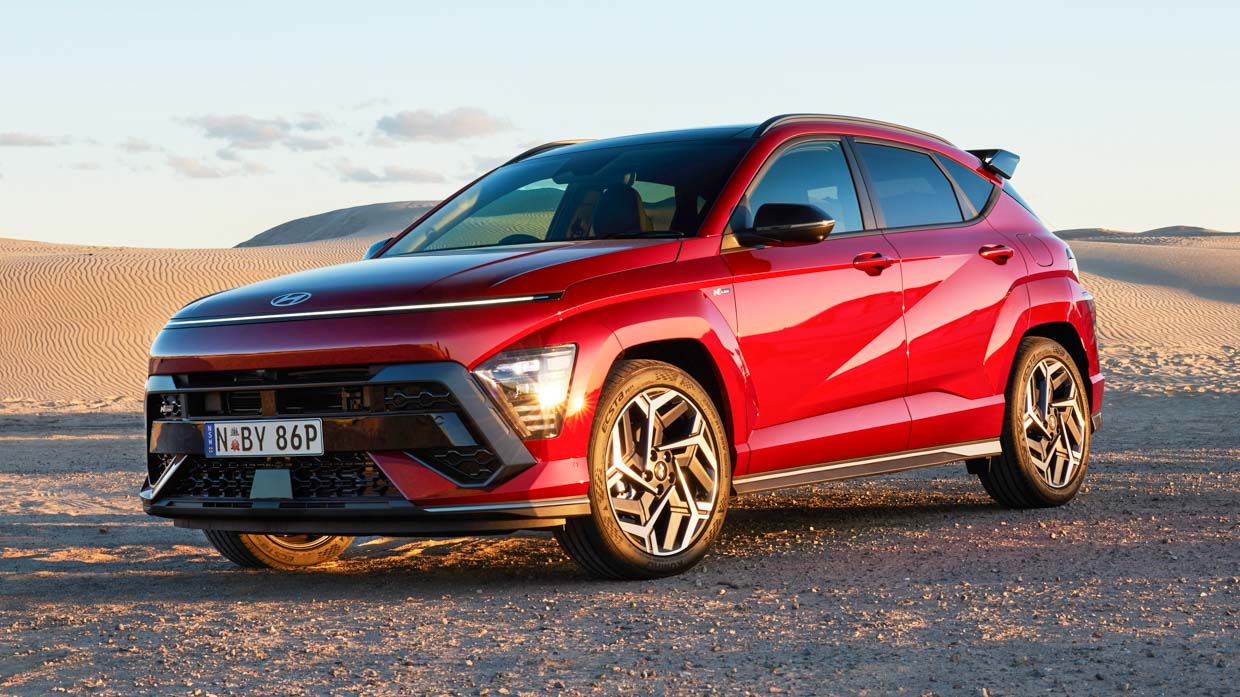
For this double-duty predicament, the old Hyundai Kona – which measured a diminutive 4205mm long in base guise – was perceived by many as just too small.
Hence why the second-generation Kona has grown in every way: it’s longer, taller and wider. It’s also more expensive – by about $5100 in entry form, through to $3300 more in higher grades.
Hyundai justifies this hike partially by reference to the inflationary pressure in the economy, but mostly by fairly pointing to the fact that the new Kona isn’t really a direct substitution for the old one.
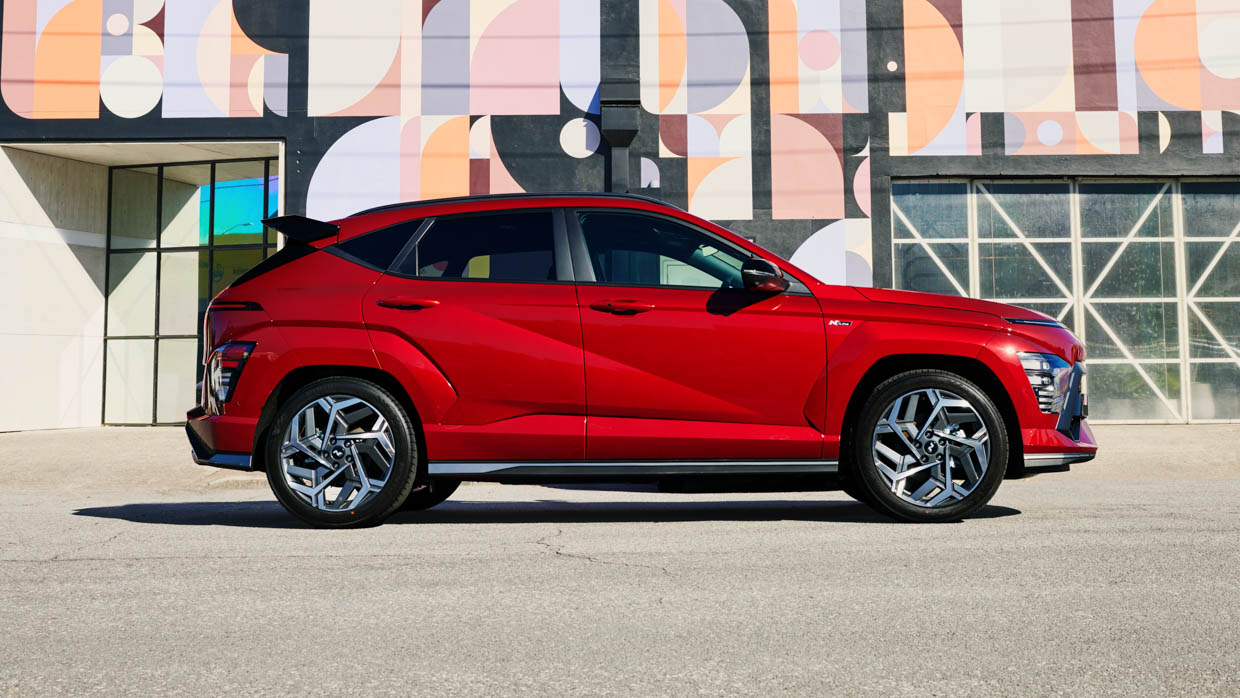
It’s a new model, falling halfway between the old-gen car and the midsize Tucson SUV dimensionally.
This time around, the Kona range is even broader than before, clearly pointing at this model’s growing importance and relevance in Hyundai Australia’s lineup.
Whispers that the i30 hatchback will depart Hyundai’s global offering aren’t going away and word on the street is that the Kona will take its place as the company’s default small offering.
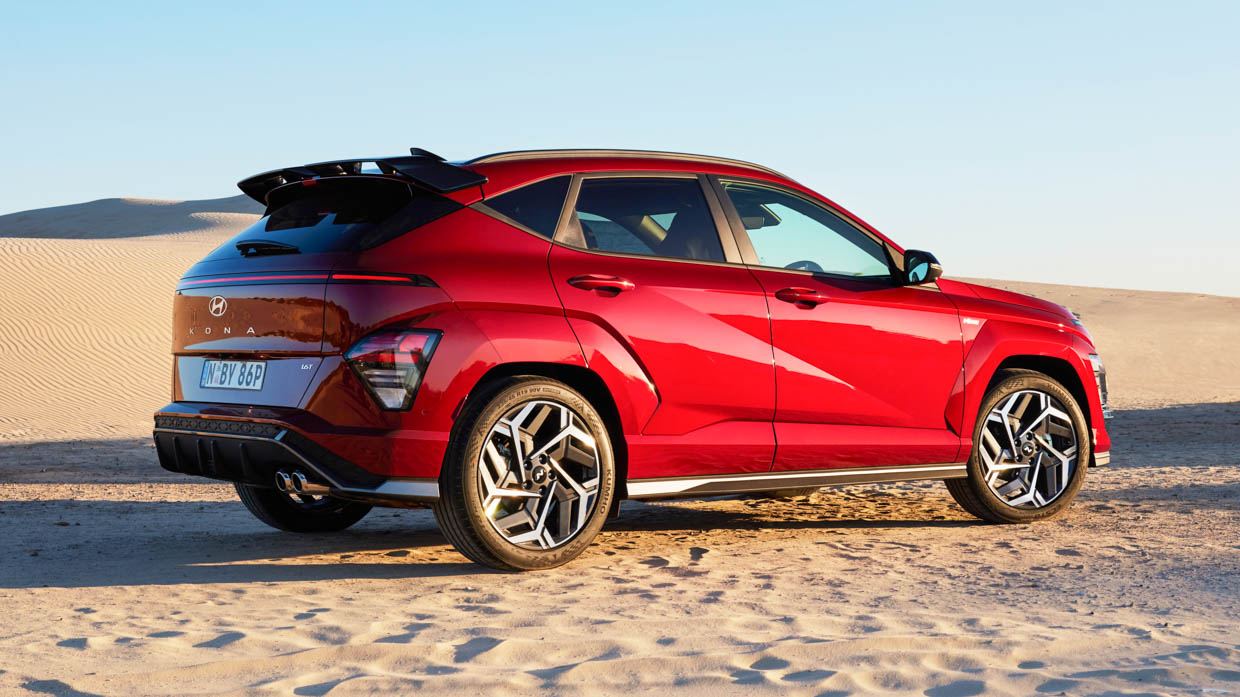
Like last time, the range takes in a non-turbo petrol engine at the entry point of the range (from $32,000) before moving on to an improved version of the 1.6-litre turbocharged petrol with AWD from $40,000 – with a new eight-speed automatic with torque converter.
That’s what we are testing here, in $46,500/$50,900-driveaway Premium N Line form.
Pegged at the same pricing as the turbo, though, is a new Kona Hybrid powertrain that promises 3.9L/100km efficiency.
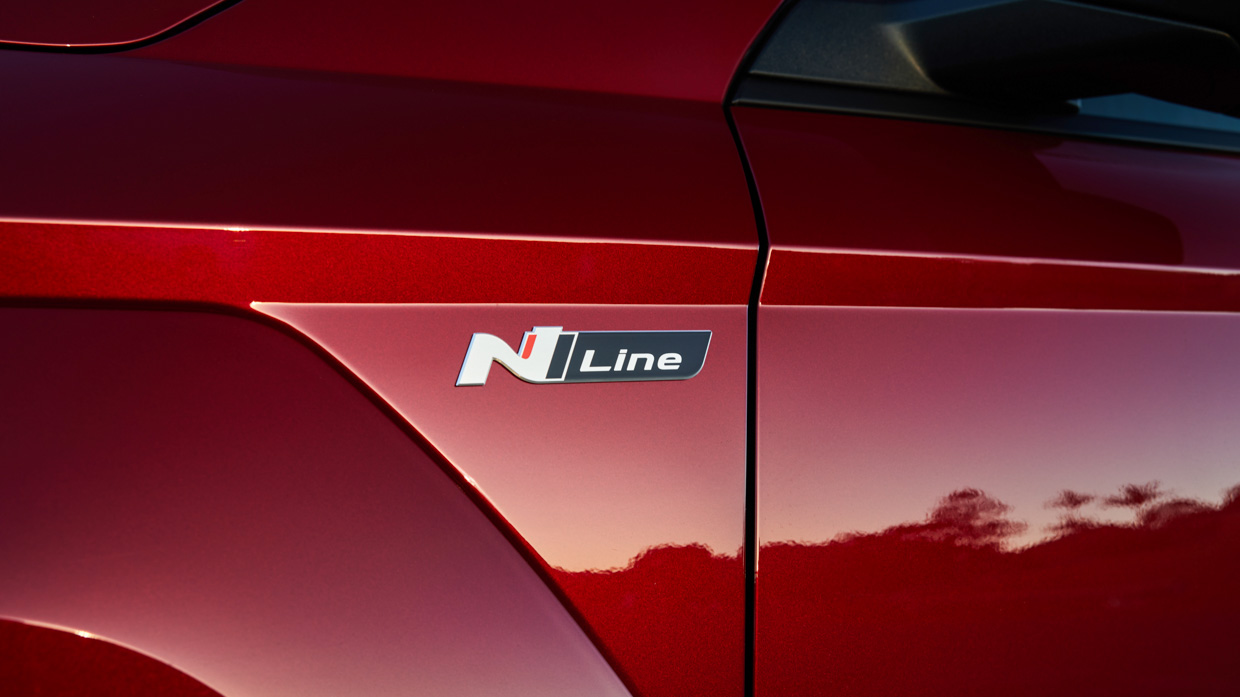
In time, Hyundai Australia foresees that the hybrid will become the best-selling Kona engine in Australia after it gets here in Q3 2023. Plus, at least two flavours of Kona EV are on the way, arriving before Christmas.
The entrance of the hybrid and electric Konas won’t be before time. A first drive of the first two engines to get to Australia – the non-turbo and turbo petrols – revealed a relatively competent small SUV in need of an X-factor, which the electrified powertrains may grant it.
Unlike with its diesels, Hyundai has had consistent difficulty with making its petrol engines fuel efficient, and that issue persists here.
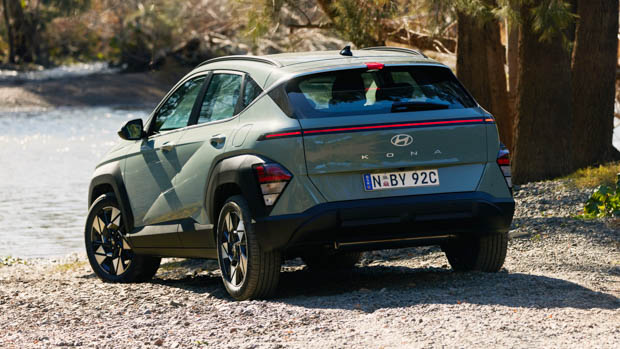
Pictured is the base-model Kona with the 2.0-litre engine
The basic 2.0-litre/CVT engine isn’t so bad once on the open road, but our 8.0L/100km (highway) and 11.0L/100km (urban) fuel consumption figures with the 1.6-litre turbo petrol are too thirsty for a non-performance car.
Anyone migrating from a traditional hatch – like an i30 – will basically find that their petrol bills climb in the new Kona. That is unless they go for the ultra-frugal hybrid or dive into the fully electric models. If it was our money, we’d be waiting.
That’s not to say that the 1.6-litre turbo petrol model on test doesn’t have moderate charms. It’s a willing-enough, direct-injected unit – while it doesn’t sound inspiring, it works diligently to serve its 146kW/265Nm quickly and progress is smooth.
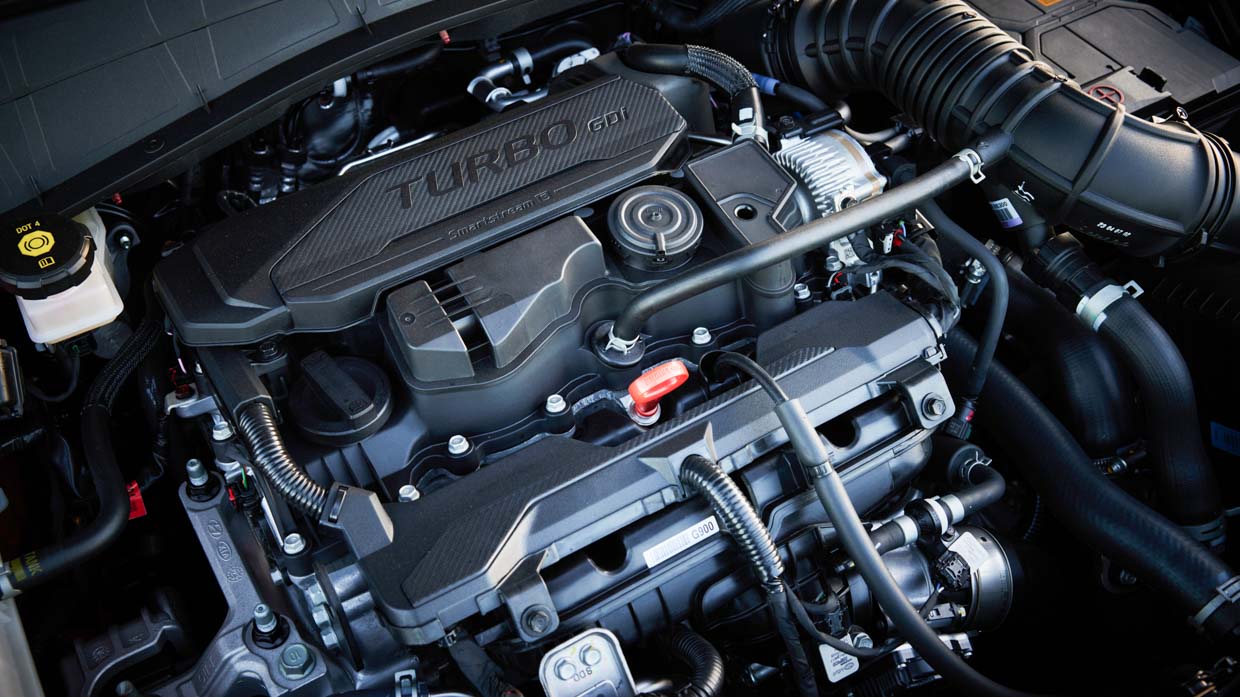
An earlier iteration of the same engine was available on the old Kona (plus the current i30 and Tucson), but in new Kona, an inspired decision has been made to drop the old seven-speed, dry dual-clutch transmission for a more conventional eight-speed torque converter auto.
That’s worked wonders for driveability. Expect Tucson to follow suit later.
Despite the new Kona adding between 55-190kg depending on the 1.6T variant, updates to the engine plus the new transmission appear to have boosted the SUV’s acceleration capabilities.
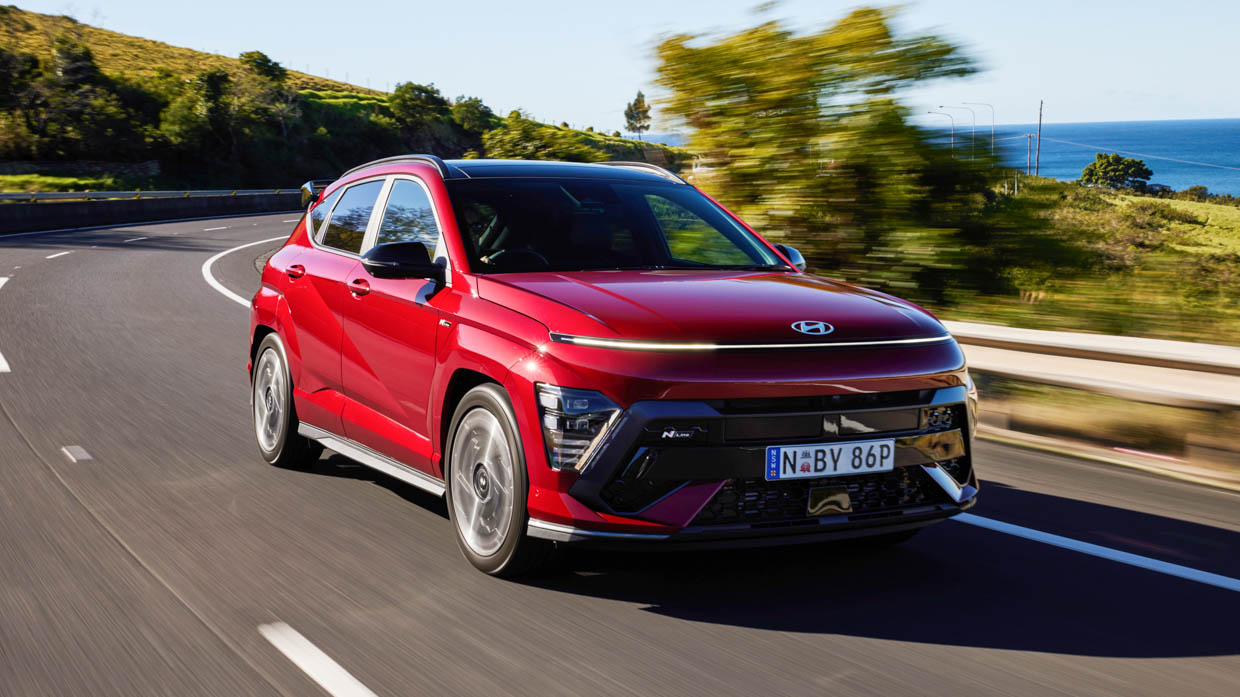
We timed the old Kona 1.6T at a marginal 8.63sec 0-100km/h, but the new turbo/AWD/8AT combo did the same sprint in just 7.44sec – a 14 percent improvement.
As its class-bending enlargement suggests, the new Kona rides on an new Hyundai platform – K3, shared with the second-gen Kia Niro. But the basic approach to hardware is remarkably similar to the old car.
The base-grade 2.0-litre petrol engine cops a cheaper, torsion-beam rear suspension while the 1.6T/AWD upgrades to a multi-link independent rear.
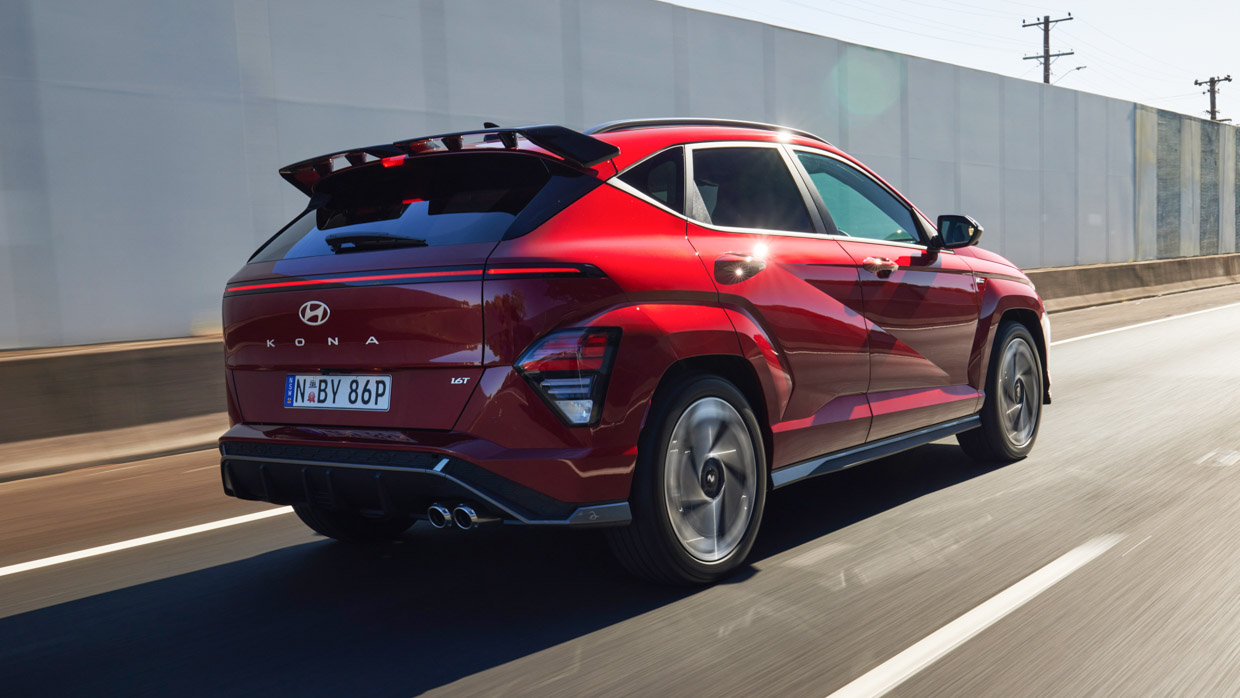
We thought the difference was marked, though others who’d driven the new Kona didn’t uniformly agree. We plan to explore it fully in a separate review, but the 2.0-litre models on their standard 18-inch wheels and simpler suspension, appeared to ride stiffly – poorly, even – over urban bumps.
On the same loop of bumps, we couldn’t recreate the 2.0-litre car’s jarring ride in the 1.6-litre turbo. Despite stepping up to 19s, we felt that Hyundai’s suspension engineers have settled on a superior blend of ride attributes.
The 1.6-litre turbo/AWD rides on a suspension that is noticeably firm – probably firmer than necessary – but it’s compliant and liveable.
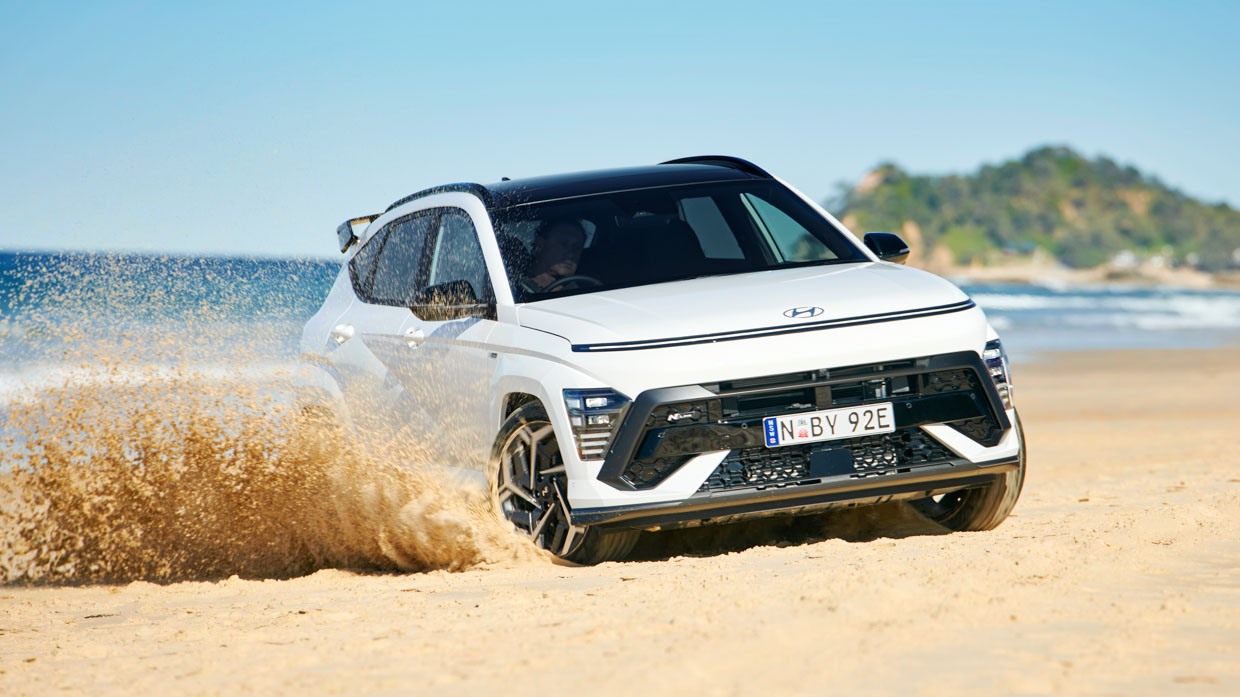
In a further departure from their old way of doing things, Hyundai Australia’s local engineers did not retune the new Kona for local roads, nor did they choose from a menu of global tunes.
Instead, the local team feels its priorities were adequately integrated into the global Kona suspension tuning program, and there’s just one ride setup for the world’s audiences.
We have our doubts about the 2.0-litre for now, but in the case of the 1.6-litre turbo we tend to agree. The car looks sporty, so a sporty-ish ride is probably appropriate.
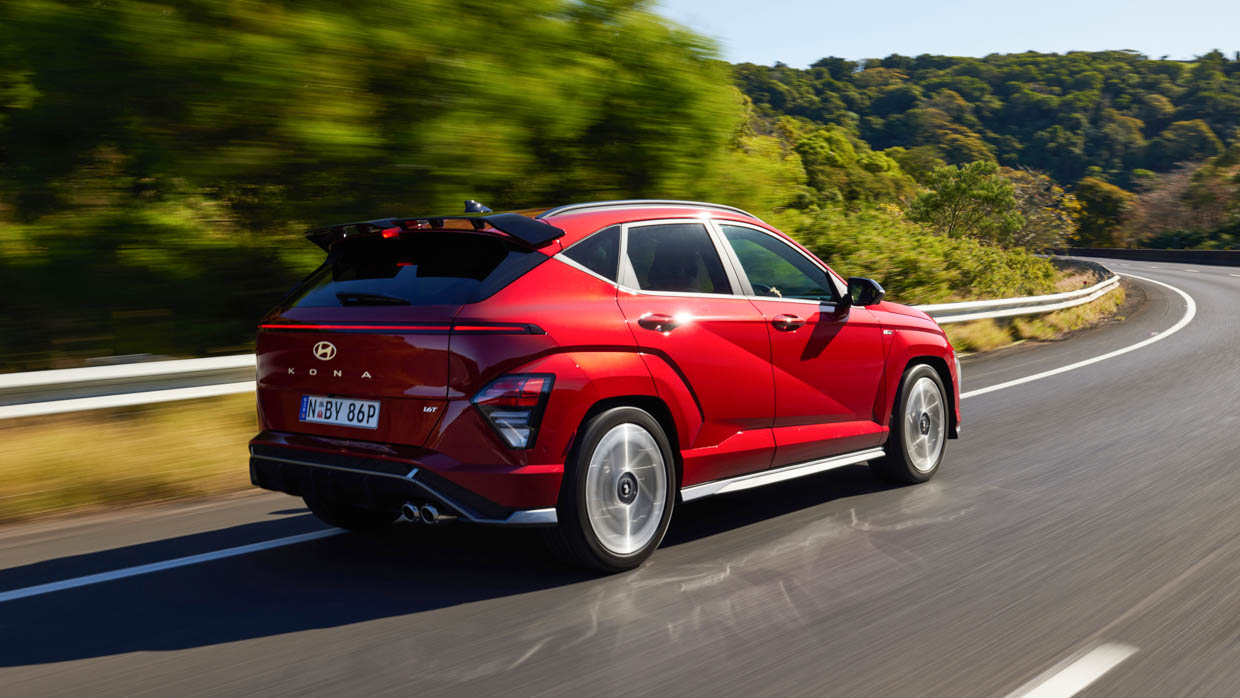
And high-speed body control and ride on country roads was admittedly excellent. Plus, the Kona has pleasant, light and moderately quick steering.
A big unknown is how the new Kona hybrid will ride. It has its own suspension tune again, based around the different weights of the electric motor and non-turbo 1.6-litre petrol engine.
A wildcard is that the hybrid does get independent rear suspension. It could be the pick. We’ll know soon enough.
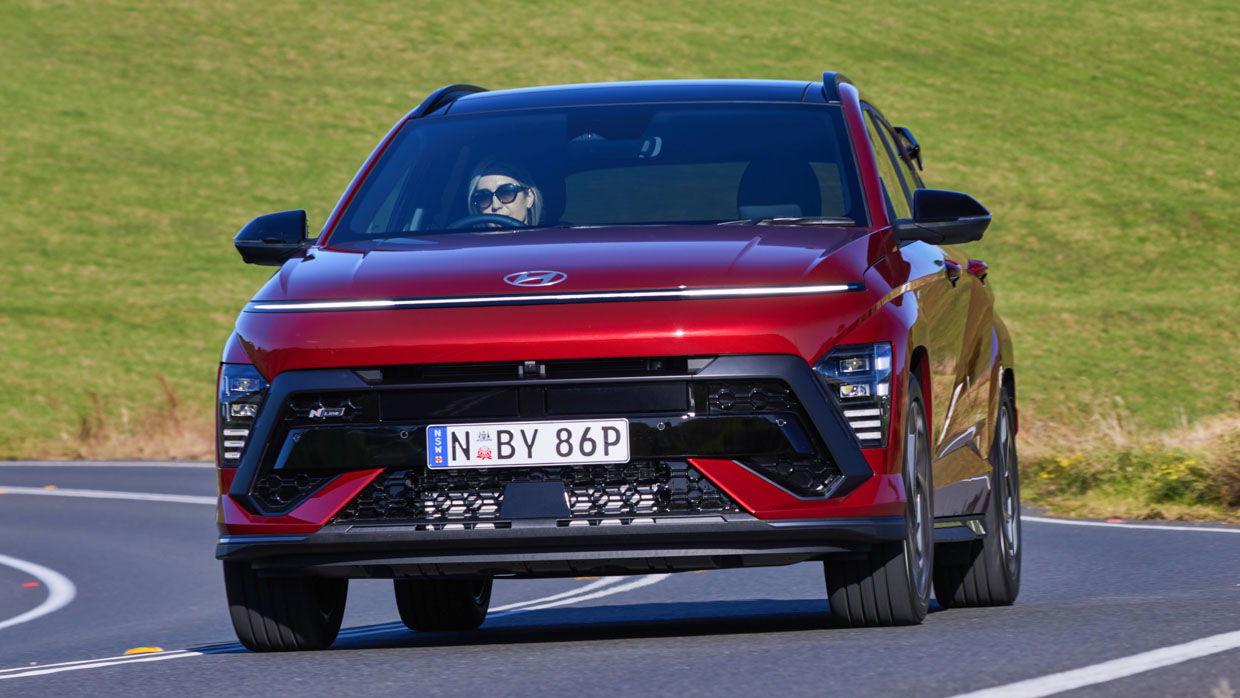
Then there is the electric, which is especially consequential because Hyundai says that the new Kona was developed to be an EV first – and a hybrid or petrol second.
If that’s true, then there is no excuse for the EV to feel like anything other than the most intuitive and natural Kona from behind the wheel.
But the new Kona turbo’s frisky mid-seven sprints from 0-100km/h simply are not enough these days to justify double-digit fuel use, even if the Kona happily gets along on the cheapest (and dirtiest) 91-octane petrol.
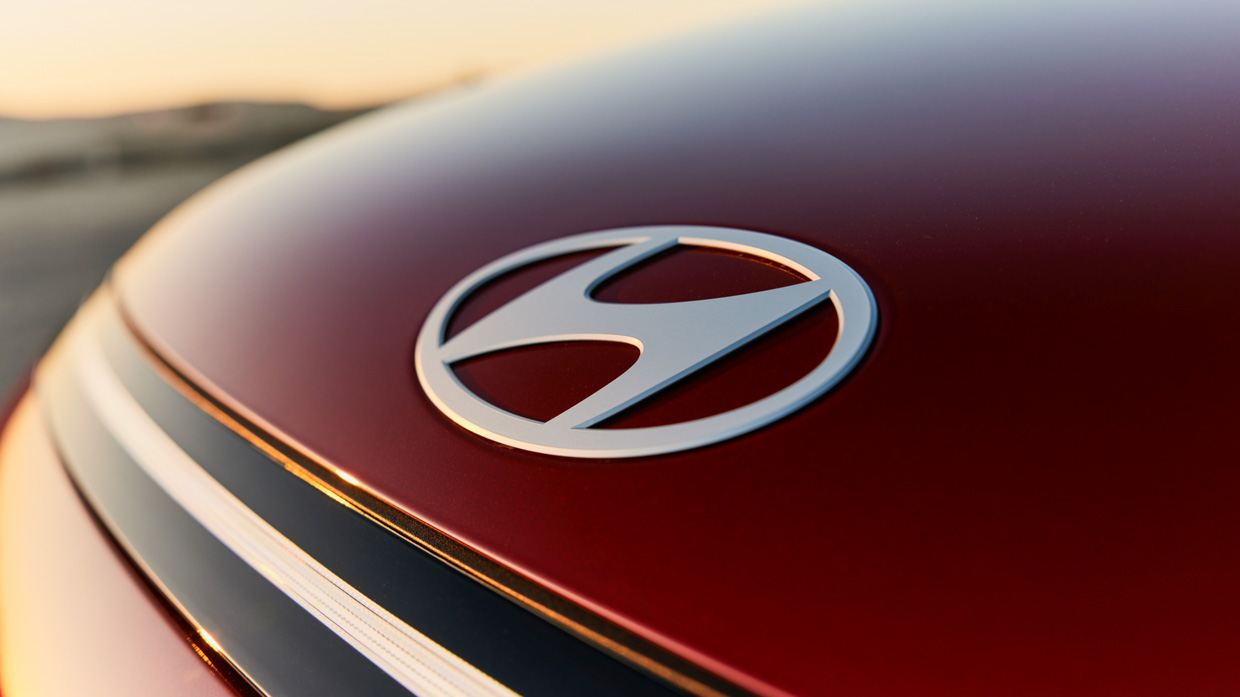
The switch away from a dual-clutch hasn’t been enough to lengthen the Kona turbo’s inconveniently short, 12 month/10,000km service intervals – which cost $399 apiece for the first five years/50,000km under a capped price servicing plan.
Most rivals, including turbos from Volkswagen and Toyota, afford 15,000km between stops, as does the non-turbo Kona.
And Hyundai is persisting with a five year/unlimited-kilometre new car warranty despite cousin Kia – and Czech rival Skoda – moving to a more generous seven years of coverage.
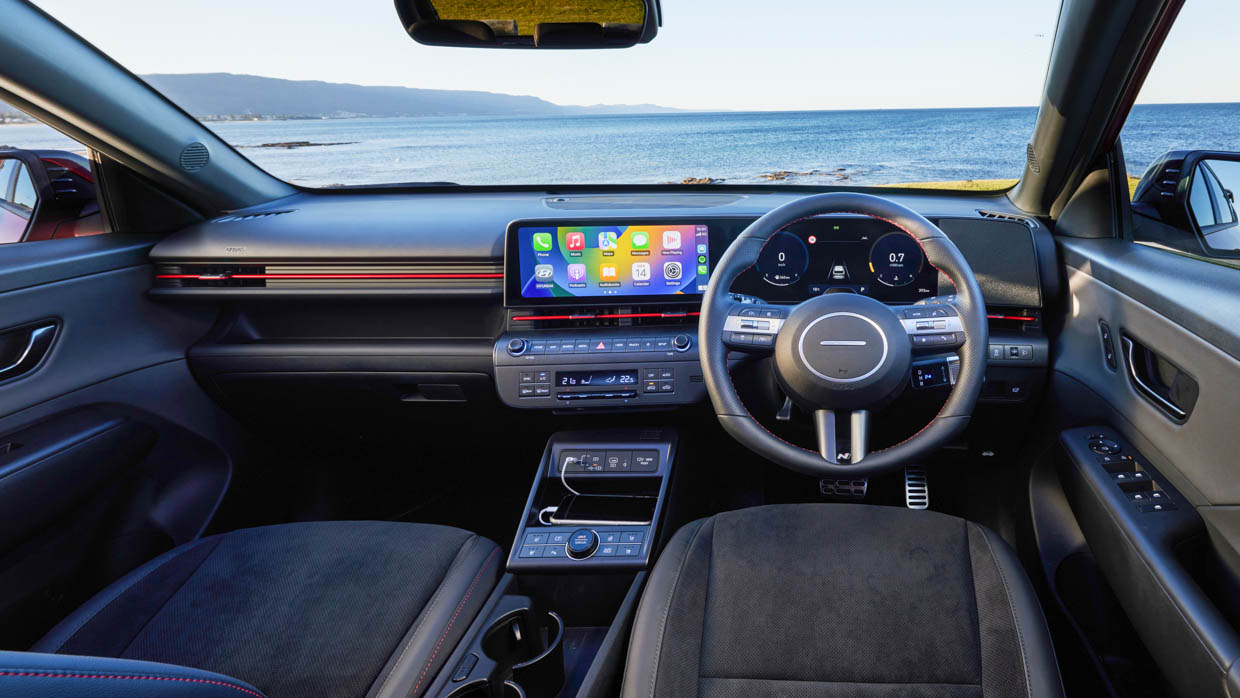
Price bracket creep has been a trend across the industry – it’s certainly not limited to Kona.
But jumping inside the new small SUV will result in most experiencing a familiar emotion for road testers: initial enthusiasm for the more elegant and clean design, and neatly-integrated tech, giving way to disappointment for persistently subpar material quality.
The new Kona promised Hyundai an opportunity to reset the model’s reputation for cheap interior plastics, but unfortunately, far too many cabin surfaces continue to feature nastily-textured hard stuff.
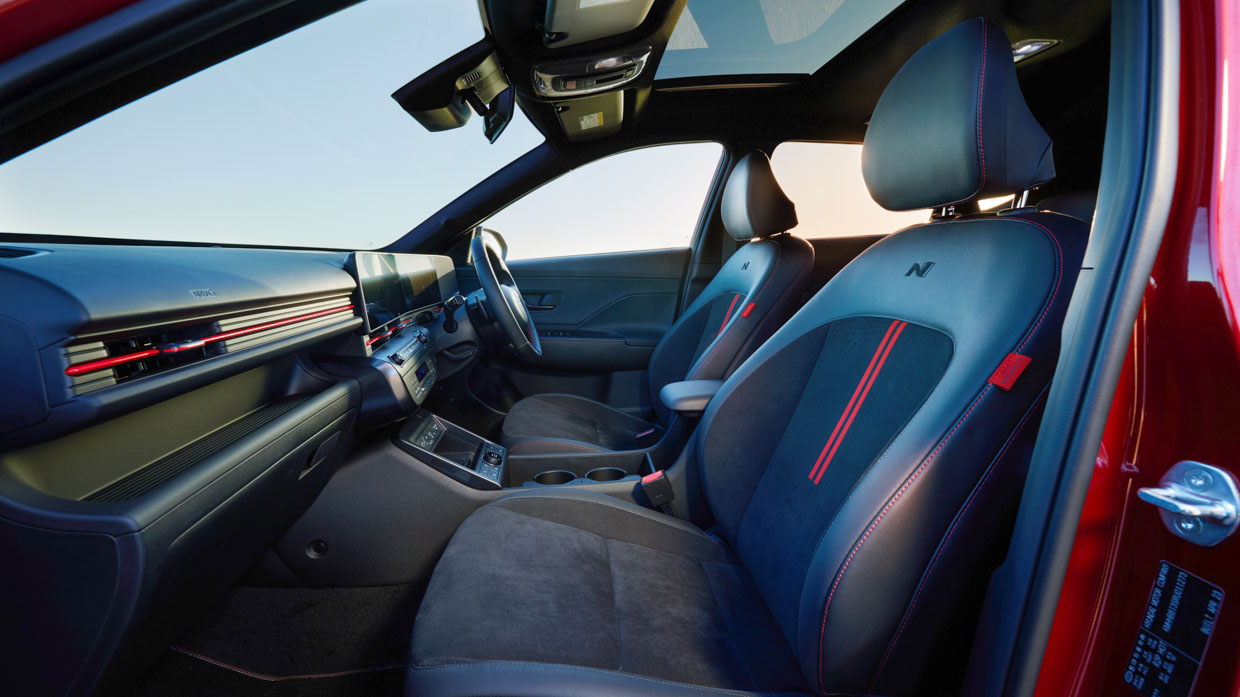
Check out the hard door tops and untextured window switch surrounds, not to mention the rock-hard centre console that’ll bruise up a knee.
And all at $50,900-driveaway as tested! When the (admittedly pokier) $38,990-driveaway Skoda Kamiq Style can manage to incorporate far richer interior materials, you have to wonder why Hyundai can’t.
Well, it can – the i30 hatchback is closer to being Volkswagen-like in terms of perceived quality.
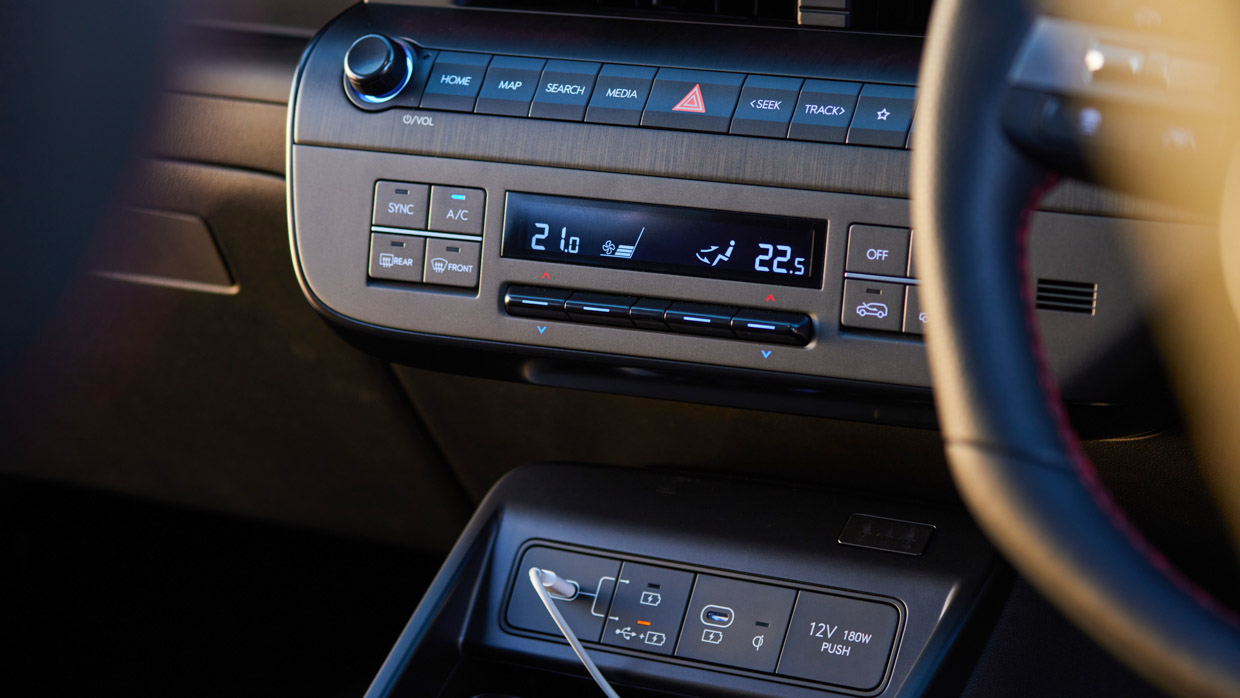
At present, it’s hard for us to suggest opting for a Kona in this specification – the $51K-driveaway Premium N Line – over the bigger, and considerably richer-feeling, Hyundai Tucson Elite diesel that costs $300 less on the road and consumes a third-less fuel.
Perhaps that car will come in for a ‘rationalised’ price soon.
Unless, that is, you prefer the size and appearance of the Kona. Adorned as our tester was in N Line exterior and interior treatment, it’s of the minute.
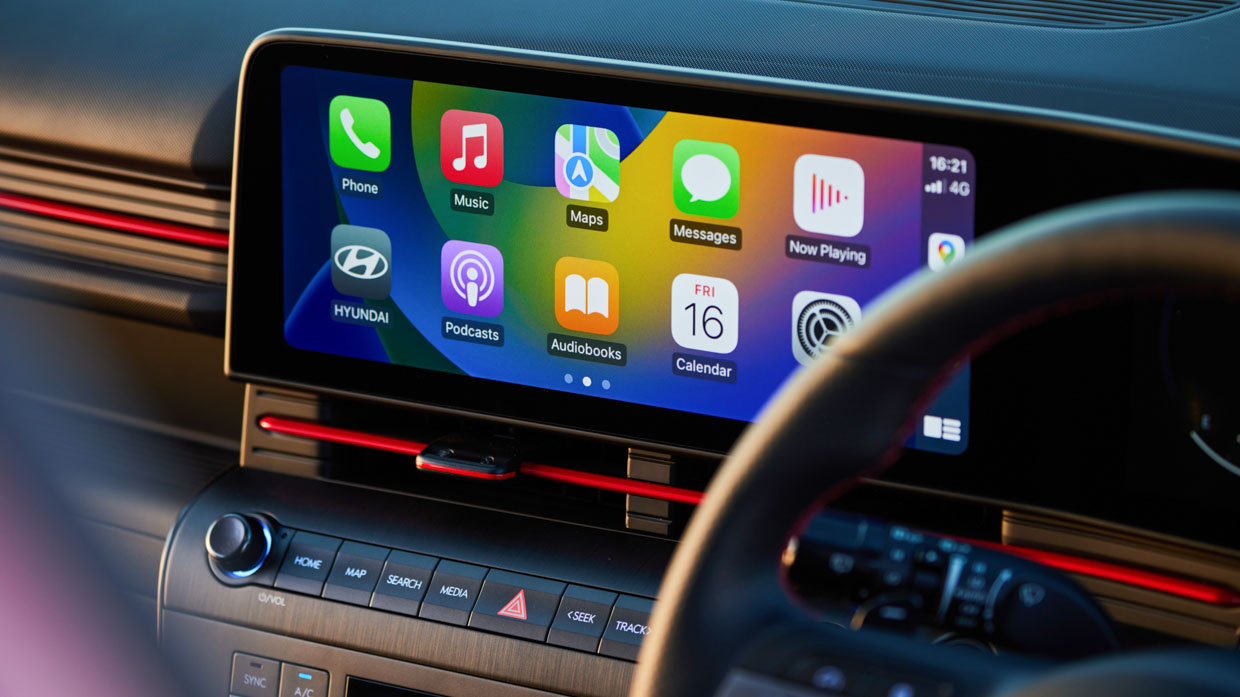
Trademark Kona cues have been retained from the original (if nothing else) first-gen car, but chief designer SangYup Lee has approved a far more resolved treatment for the new car. It’s busy, but it works well.
Inside, too, we appreciate the joined binnacle of 12.3-inch screens that are crisp and high resolution.
Opt for a Premium-tier Kona and you get integrated nav, and soon, having that feature won’t quirkily disqualify owners from also scoring wireless Apple CarPlay and Android Auto: read more about that here.
But that convenience is missing at launch. Hyundai says it’ll be added in a Q4 2023 software update.
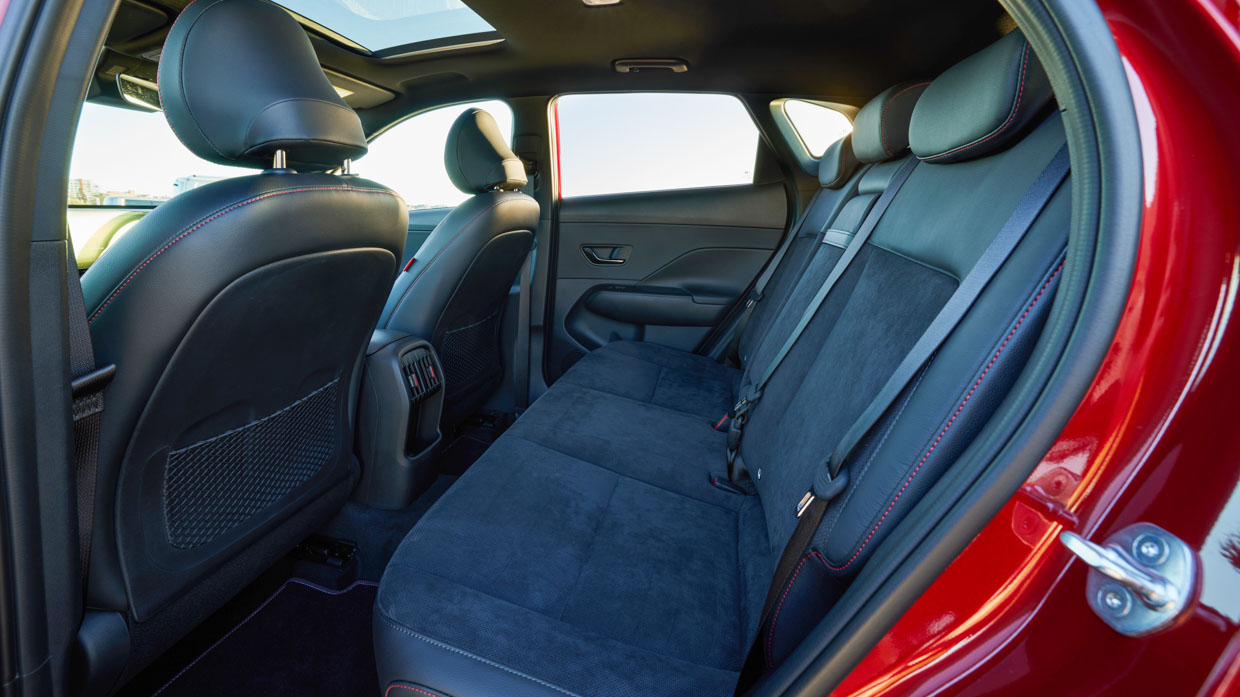
If you can stretch to the Premium, we think it’s worthwhile. The seats, being electrically-adjustable with lumbar for the driver, and with heating/cooling up front, are substantially more comfortable than the manual, uncooled units in the non-Premium versions.
Moving to the second row is where the new Kona impresses. The significant 60mm lengthening of the wheelbase has revolutionised back-seat space from being one of the segment’s pokiest to about the middle of the pack or slightly better.
Certainly, it’s more spacious than a Mazda CX-30, but the Toyota Corolla Cross is still more flexible.
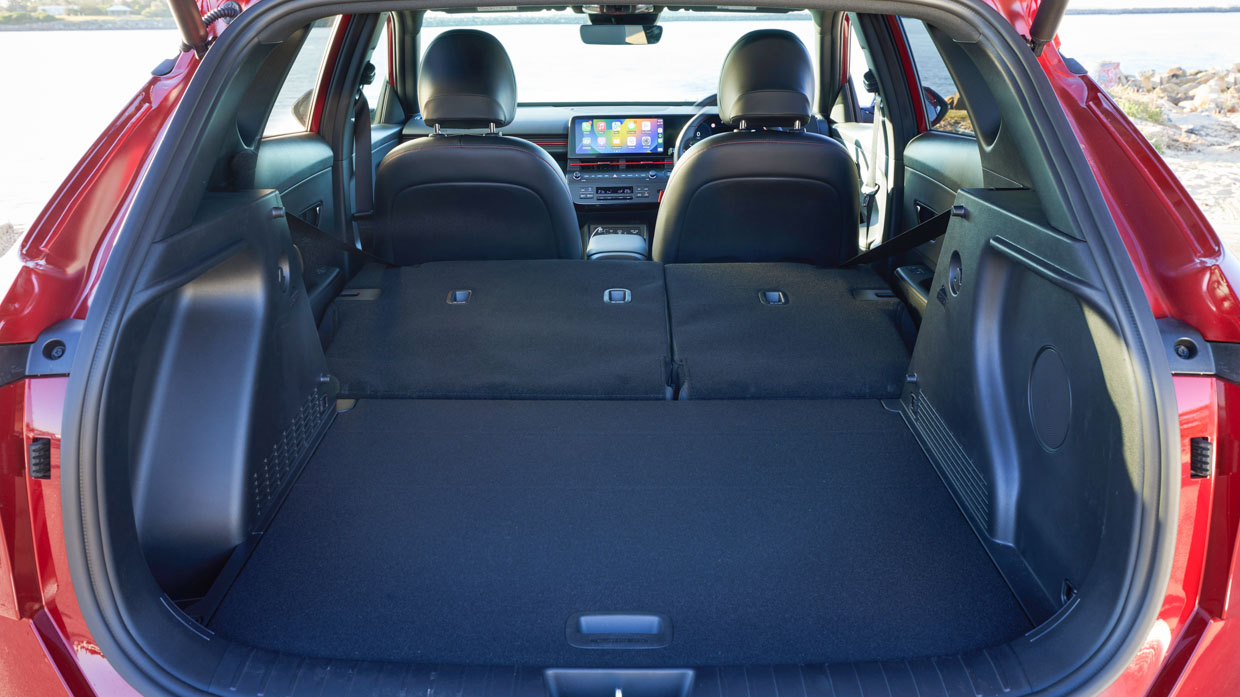
Likewise, the Premium’s power tailgate opens to reveal 407 litres of cargo space, and petrol models do nab a space-saver spare wheel, which is better peace of mind than nothing.
If you’re tied to the turbo motor, you have to go for the N Line treatment. But a nice hack to save some cash, if you can wait for the hybrid, is to go for a Kona Premium hybrid, sans-N Line baubles.
That saves a handy $3000, which could make all the difference. We’ll wait until we can drive one.
When equipped with the 1.6-litre turbo engine and the suspension tune exclusively paired to that motor, the new Hyundai Kona fundamentally drives well.
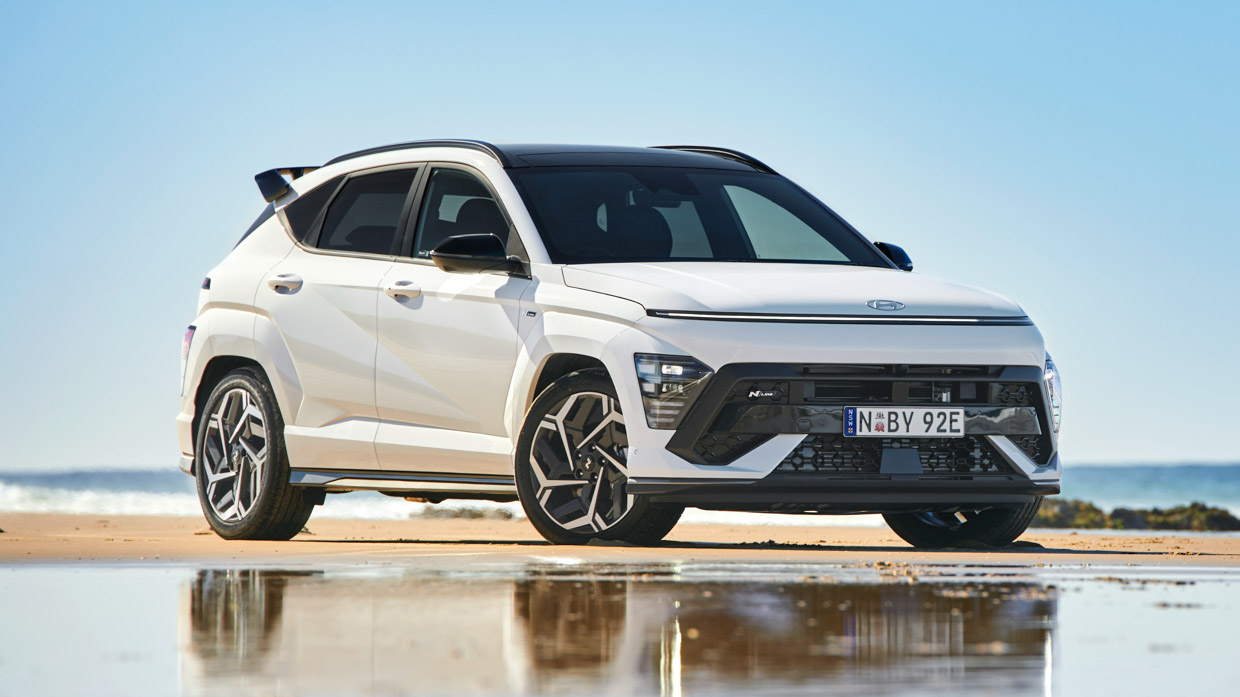
It’s more responsive and accelerative than before and while the ride’s firm, it doesn’t get in the way. The Kona is usefully bigger for both people and cargo, and the tech’s a wireless-mirroring update away from being contemporary.
But all this doesn’t feel quite up to being over $50,000 no-more-to-pay. We’re not sure we’ve driven our preferred new Kona yet, but it could be the incoming $43,500 (plus on-roads) Premium hybrid grade.
Or it might be the forthcoming Kona EV – which Hyundai promises was given absolute priority in development. If the fully-electric models don’t drive most compellingly, it’ll be a surprise.
Key specs (as tested)
About Chasing cars
Chasing Cars reviews are 100% independent.
Because we are powered by Budget Direct Insurance, we don’t receive advertising or sales revenue from car manufacturers.
We’re truly independent – giving you Australia’s best car reviews.
The estimate provided does not take into account your personal circumstances but is intended to give a general indication of the cost of insurance, in order to obtain a complete quote, please visit www.budgetdirect.com.au. Estimate includes 15%^ online discount.
^Conditions Apply
Budget Direct Insurance arranged by Auto & General Services Pty Ltd ACN 003 617 909(AGS) AFSL 241 411, for and on behalf of the insurer, Auto & General Insurance Company Limited(ABN 42 111 586 353, AFSL 285 571).Because we don’t know your financial needs, we can’t advise you if this insurance will suit you. You should consider your needs and the Product Disclosure Statement before making a decision to buy insurance. Terms and conditions apply.
Indicative quote based on assumptions including postcode , 40 year old male with no offences, licence suspensions or claims in the last 5 years, a NCD Rating 1 and no younger drivers listed. White car, driven up to 10,000kms a year, unfinanced, with no modifications, factory options and/or non-standard accessories, private use only and garaged at night.
^Online Discounts Terms & Conditions
1. Discounts apply to the premium paid for a new Budget Direct Gold Comprehensive Car Insurance, Third Party Property Only or Third Party Property, Fire & Theft Insurance policy initiated online on or after 29 March 2017. Discounts do not apply to optional Roadside Assistance.
2. Discounts do not apply to any renewal offer of insurance.
3. Discounts only apply to the insurance portion of the premium. Discounts are applied before government charges, taxes, levies and fees, including instalment processing fees (as applicable). The full extent of discounts may therefore be impacted.
4. We reserve the right to change the offer without notice.